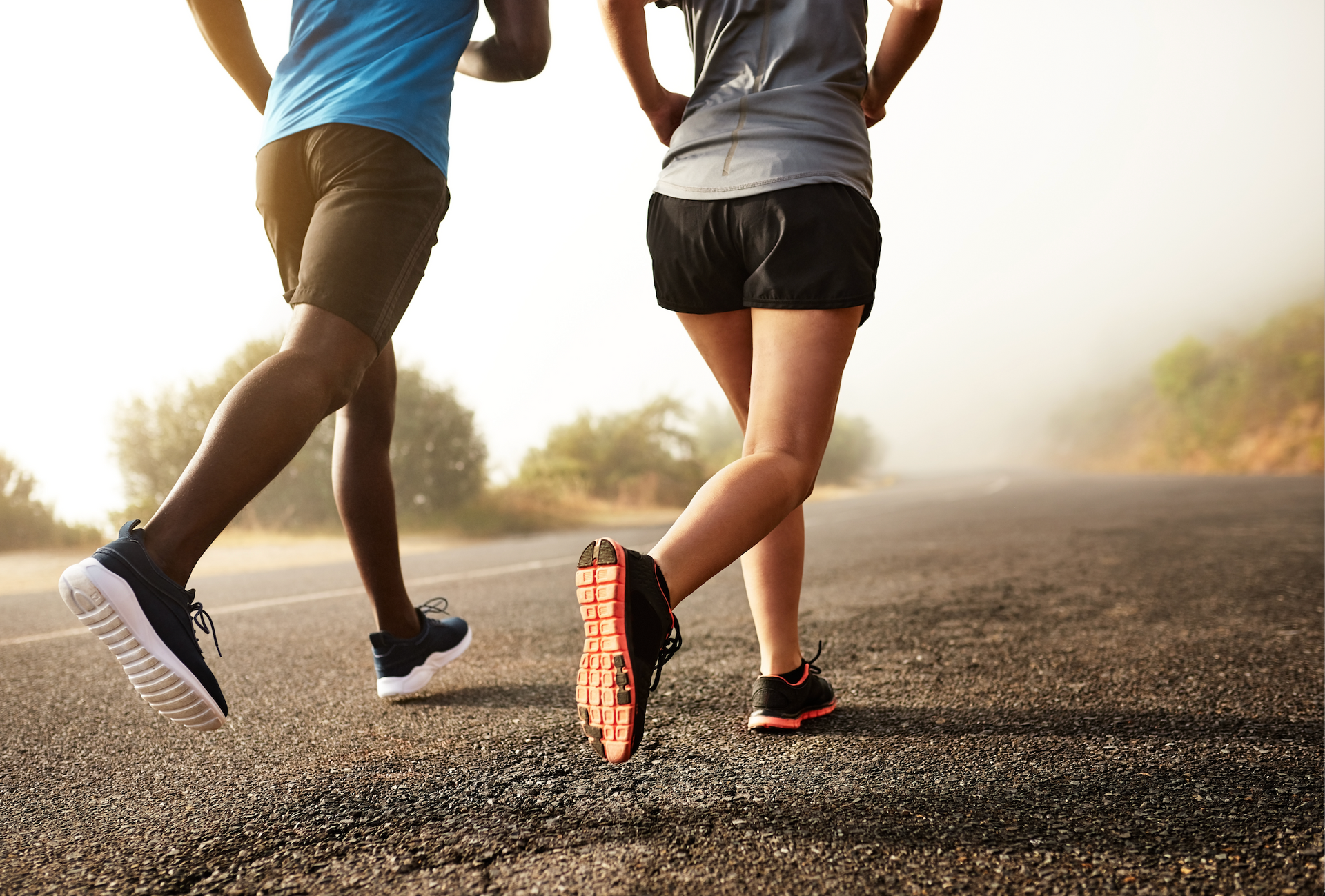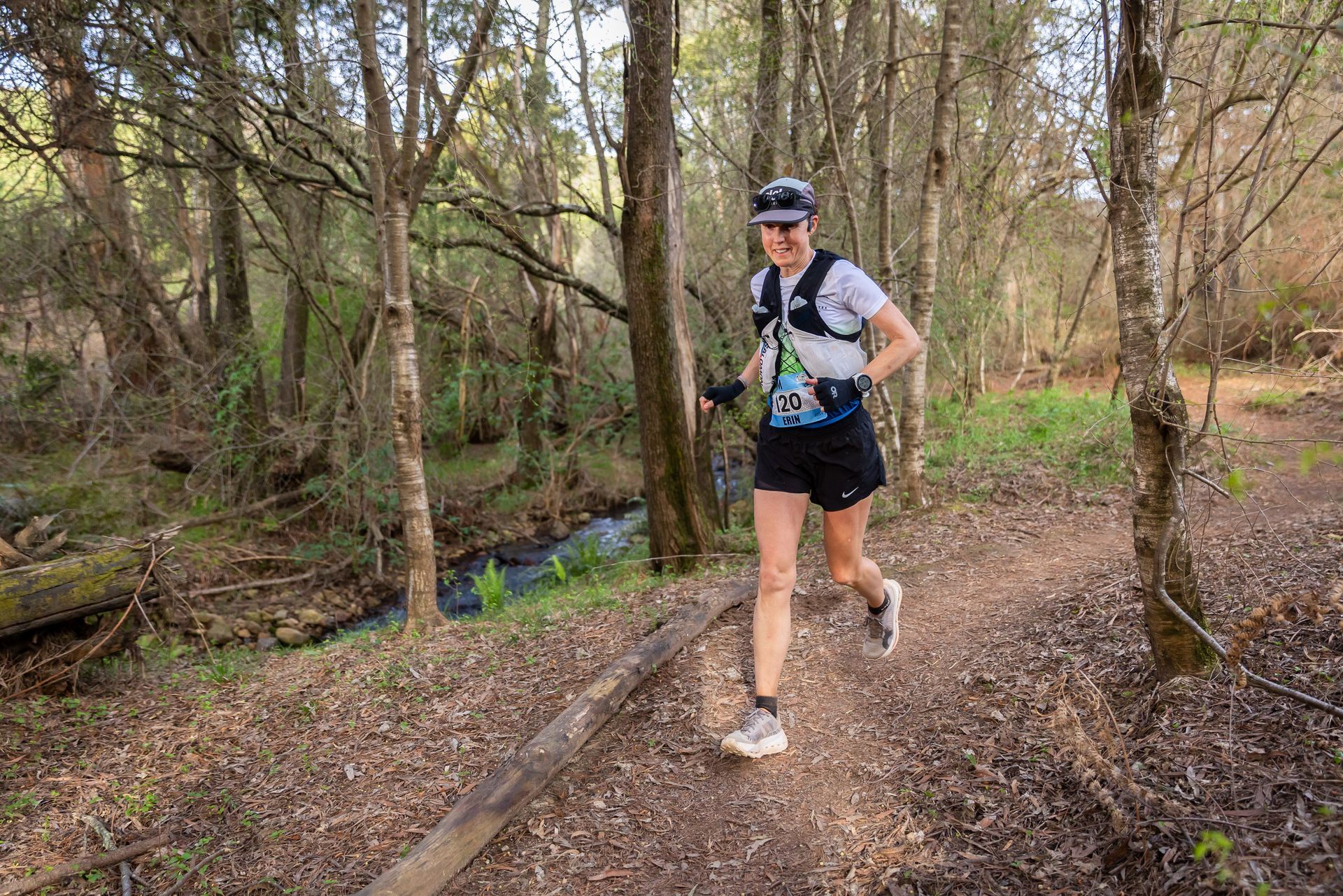
COACH’S CORNER - 4 Running Myths Debunked by Ash Daniels
From knees to cramping, hydration to barefoot hype, coach ash daniels busts 4 of the biggest myths that keep doing the rounds - and shares what the science actually says.
Running Is Bad For Your Knees

You can guarantee this comes from someone who has never run in their life. There is no evidence to support this statement. Counter to this view, studies are showing the opposite. Even for older runners a study published in 2018 concluded:
Among individuals over 50 years old with knee osteoarthritis (OA), self-selected running is associated with improved knee pain and not with worsening knee pain or radiographically defined structural progression. Therefore, self-selected running, which is likely influenced by knee symptoms and may result in lower intensity and shorter duration sessions of exercise, need not be discouraged in people with knee OA.
A further study in 2021 concluded that changes to cartilage following running are temporary and relate to fluid dynamics. Even better they concluded:
Results suggest that cartilage recovers well from a single running bout and adapts to repeated exposure.
And it doesn't stop there, how about comparing runners to people with a sedentary lifestyle? An article in the Journal of Orthopaedic & Sports Physical Therapy found that recreational runners had less chance of developing knee and hip arthritis compared to nonrunners/sedentary individuals and competitive runners.
The researchers also concluded that running at a recreational level for up to 15 years and longer can be safely recommended as a general health exercise and benefits hip and knee joint health. So if you sit on the settee binging Netflix, it increases your rate of knee and hip arthritis compared with heading out for that run.
You Should Run Barefoot To Improve Your Running

Have you read the book Born to Run? It has a great back story, finishing with a group of Americans heading to Mexico and racing the local Tarahumara in an ultra-marathon. The Tarahumara are a group of Indigenous people of Mexico renowned for their running, specifically ultras. That part was a great read in the book.
The other aspect of the book focused on the supposed benefits of running with correct form, specifically barefoot running and how it reduces injuries in runners. All sounded great at the time. Except what people conveniently forget is the class action lawsuit that followed against Vibram over these false claims. As part of the settlement, Vibram had to remove claims that the shoes were effective in strengthening muscles or reducing injury.
In 2013, a study of barefoot running shoes found that those runners given Vibram's shoes (barefoot) were at greater risk of injury, further supporting the class action and debunking the barefoot myth.
I wrote in more detail previously on this and a great quote from the lead researcher about changing your running form is "not the primary factor, as most people will self-optimize with sufficient training." A key finding is you get more efficient by simply getting more experience, i.e. just get out and run more!
Watch any elite running event and you will see a myriad of running forms and styles, all of them at the front of the pack. So, what's the takeaway? Keep it simple, just run, relax and enjoy it! Your body knows how to run and will adapt over time as your fitness and strength improve.
Electrolytes (Sodium) Prevent Cramping

Generally spouted by a company or influencers wanting to sell you the latest electrolyte product made from "Dehydrated sea water," for 100 times the price you can buy salt in Coles or Woolies! Yep, I have seen that advertised and got blocked when I called them out on it. This is worth reiterating, due to the amount of marketing and fear-mongering electrolytes have nowadays.
Sodium (the most predominant electrolyte) plays only a minor role in cramping. Since cramping is influenced by diverse and individual factors, it’s unwise to attribute it solely to sodium, hydration, or any single cause. Cramping is multifactorial, and research shows that sodium is not the magic solution.
The only real reason you need and want to replace sodium during exercise is to prevent a fall in blood sodium (not cramping or performance!!!), and this only happens when you drink close to or in excess of your sweat losses!! Think running a 100 miler, being a heavy sweater, with high sweat sodium concentration and if you are replacing a large amount of the fluids you are losing, then, yes, a potential use case.
Marty Hoffman, a well-known researcher in this area, conducted a study on ultramarathon runners to negate the belief that sodium replacement is important for the prevention of muscle cramping, dehydration, and hyponatremia (more on this below). The study was done with participants in a 160km ultramarathon with temperatures reaching 39°C, it was hot. Very clear conclusions were drawn from the study:
Exercise-associated muscle cramping, dehydration, hyponatremia, and nausea or vomiting during exercise up to 30 hours in hot environments are unrelated to total sodium intake, despite a common belief among ultramarathon runners that sodium is important for the prevention of these problems.
Please save your money, it's just giving you expensive urine!
Drink to a Plan and At Every Water Station

This is potentially damaging and very bad advice due to the consequences. Whilst less an issue in ultramarathons (aid stations tend to be further apart) compared with city marathons, where the water stations can be only a couple of kms apart and fluids are easily accessible.
Drinking too much water can cause a potentially fatal condition called hyponatremia, an electrolyte disturbance in which the sodium (salt) concentration in the blood serum is outside the very highly regulated values the body normally controls.
Knowing how much water to drink is unfortunately an inexact science, and is dependent upon physiological and extrinsic factors, for example, temperature and how hard you are running. The best general advice we can give is to drink to thirst. Even with this advice, hyponatremia is still common.
This was confirmed in the same study conducted on sodium and cramping mentioned above at Western States Endurance, finding that runners could maintain proper hydration without using sodium supplements and by drinking to thirst.
Researchers found, for instance, that 13% of the athletes who finished the 2002 Boston Marathon were in a clinically hyponatremic condition, i.e. their salt levels in their blood had fallen below an acceptable level.
Symptoms of hyponatremia include nausea and vomiting, headache, confusion, lethargy, fatigue, loss of appetite, restlessness and irritability, muscle weakness, spasms, or cramps, seizures, and decreased consciousness or coma, in short, it is not pleasant!
Drink to thirst and you will be fine.









